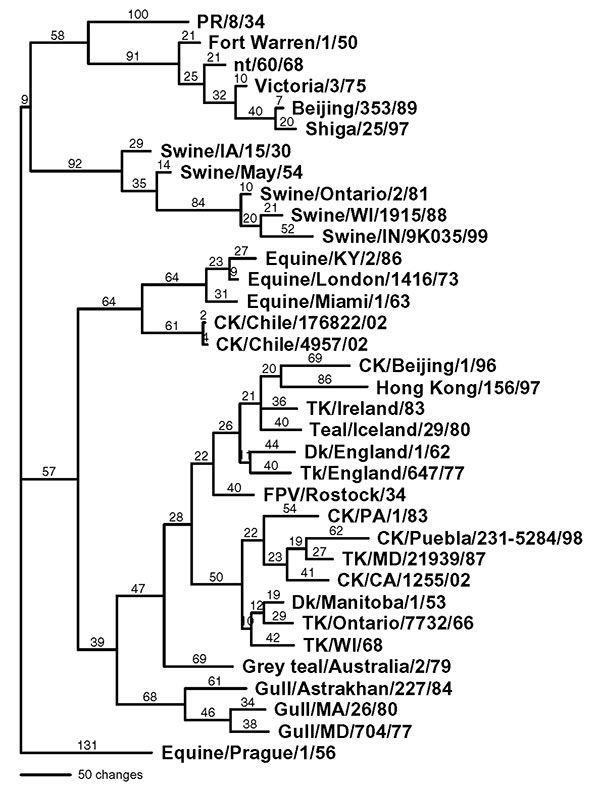Volume 10, Number 4—April 2004
Research
Recombination Resulting in Virulence Shift in Avian Influenza Outbreak, Chile
Figure 2

Figure 2. Phylogenetic tree of the nucleoprotein nucleotide sequence, which includes both low pathogenic and highly pathogenic avian influenza viruses from Chile. Representative avian, human, swine, and equine influenza gene sequences are also included. The tree was generated with PAUP 4.0b4 computer program with bootstrap replication (500 bootstraps) and a heuristic search method. The tree is rooted to A/Equine/Prague/1/56, and branch lengths are included on the tree. Standard two-letter postal codes are used for states in the United States. TK, turkey; CK, chicken; DK, duck; and FPV, fowl plague virus. For isolates without a species, it is assumed to be an isolate from a human.
Page created: February 09, 2011
Page updated: February 09, 2011
Page reviewed: February 09, 2011
The conclusions, findings, and opinions expressed by authors contributing to this journal do not necessarily reflect the official position of the U.S. Department of Health and Human Services, the Public Health Service, the Centers for Disease Control and Prevention, or the authors' affiliated institutions. Use of trade names is for identification only and does not imply endorsement by any of the groups named above.